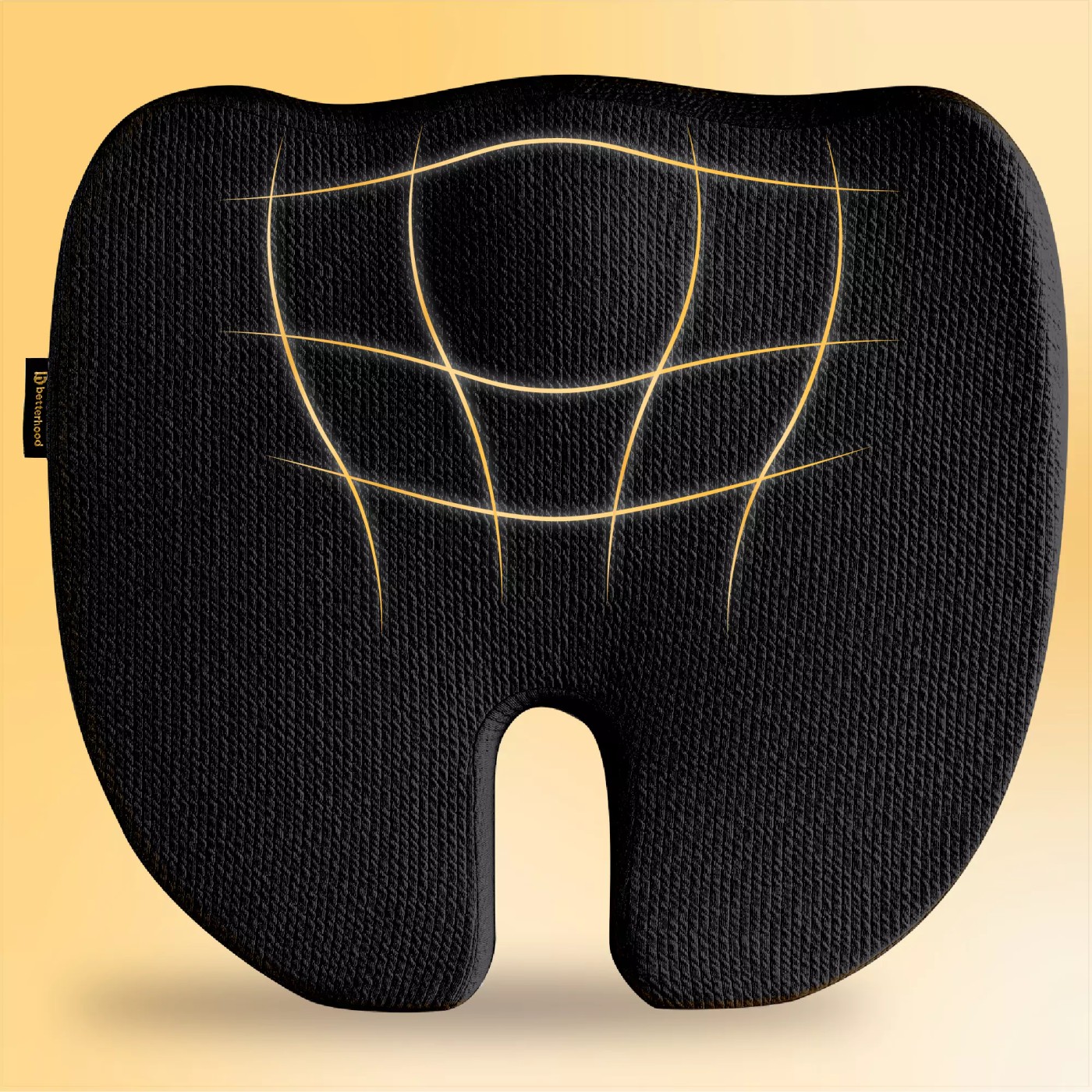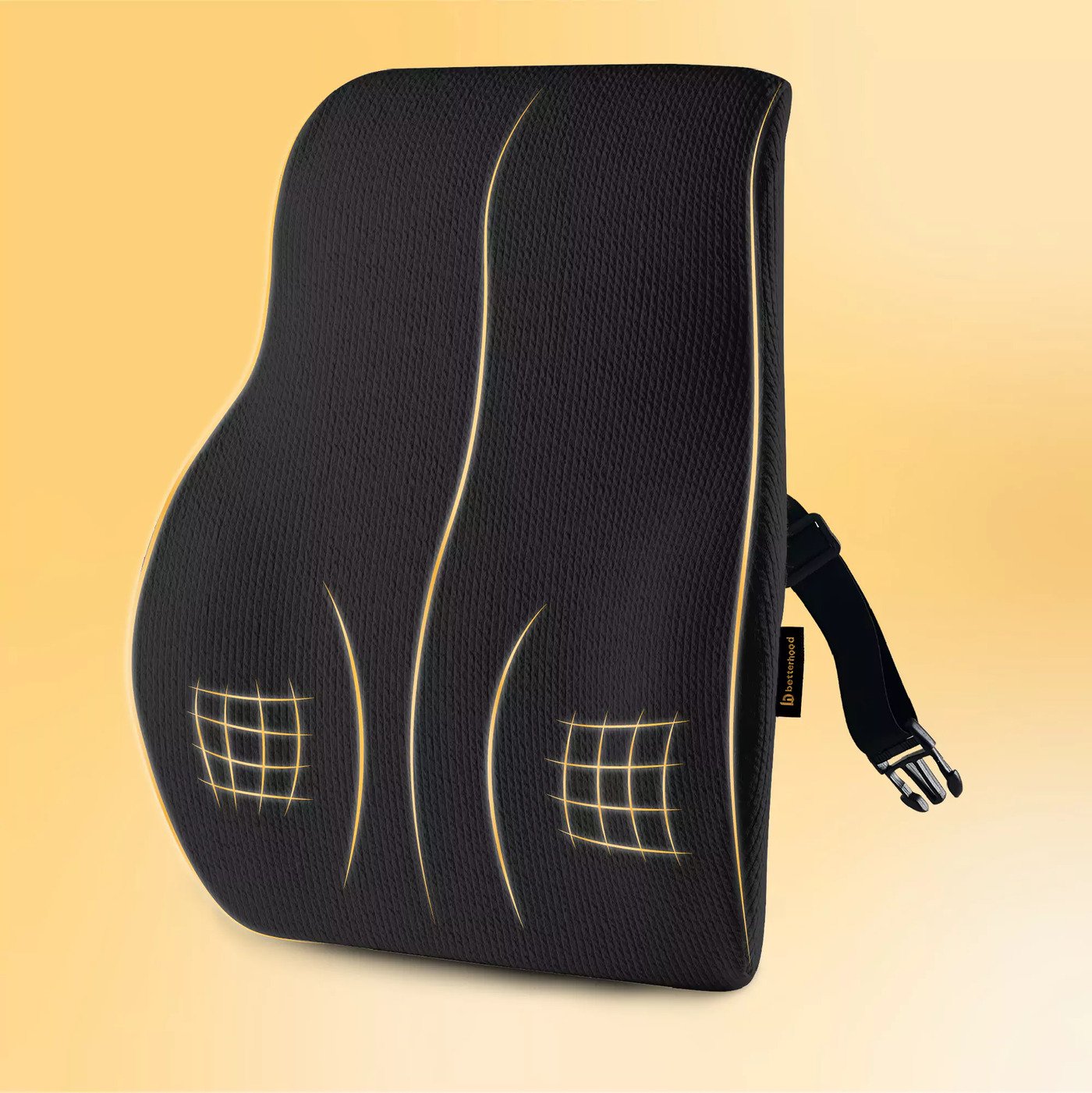Driving is a daily ritual for many Indians, whether it’s commuting through city traffic or covering long distances across states. But while the car might take us places, it’s our neck that often pays the price. For frequent drivers, especially those in their 30s, 40s, and beyond, neck pain is more than just a nuisance. It’s a red flag.
Car neck rests have become a popular solution, promising comfort, alignment, and even long-term spinal health benefits. But are they genuinely effective? Or just another automotive gimmick?
Let’s dig into the science, user experiences, and real-world relevance of car neck rests, especially for Indian roads, cars, and aging bodies.
Why Do Frequent Drivers Experience Neck Pain?
Prolonged Sitting and Poor Ergonomics Take a Toll
Neck pain among drivers is no coincidence. Long hours of static posture, poor seat design, and constant road vibrations combine to fatigue the muscles supporting the cervical spine. According to orthopedic studies, the cervical spine is highly sensitive to both posture and movement patterns. When you spend hours gripping the wheel and craning forward in traffic, that load adds up1.
Indian Roads and Vehicles Add Extra Strain
The unpredictable stop-start nature of traffic, potholes, and uneven roads in India only intensify these micro-traumas. Unlike ergonomic office chairs, many Indian car seats, especially in budget models, lack adequate lumbar and neck support. The result? Drivers unconsciously hunch, twist, or stretch their necks into unnatural positions.
Aging Makes the Cervical Spine More Vulnerable
By the time you enter your 40s, the discs in your neck begin to show signs of wear and tear. This includes loss of hydration, reduced cushioning, and the beginnings of stiffness2. If you’re already driving with poor posture, these age-related changes can speed up discomfort and lead to chronic neck issues.
What Is a Car Neck Rest and How Does It Work?
A Simple Tool with a Specific Purpose
A car neck rest is an add-on cushion that attaches to your vehicle’s seat. Its main job is to fill the gap between your neck and the seat’s headrest, helping you maintain the natural curvature of your cervical spine.
By offering passive support, it minimizes muscular effort required to hold your head up, especially during long hours on the road.
Types of Car Neck Rests in the Indian Market
You’ll find several variations, including:
- Memory foam pillows that mold to your neck
- U-shaped travel cushions that are portable
- Ergonomic car seat extensions that offer head and neck support
- Inflatable or gel-based designs for those needing adjustability and cooling
Key Features to Look For
To ensure your car neck rest actually helps:
- Contour design: Should align with the natural curve of your neck
- Firmness: Should be soft enough for comfort, but firm enough to prevent sagging
- Material: Breathable, hypoallergenic fabric is ideal in India’s humid climate
- Adjustability: Look for straps that allow it to stay secure on any car seat
Can Car Neck Rests Really Prevent Pain and Fatigue?
Immediate Relief from Tension and Stiffness
When used correctly, a good neck rest reduces the load on your cervical spine. Drivers often report reduced neck tightness, fewer tension headaches, and improved comfort during long drives.
For those working in delivery, taxi services, or logistics, this difference can be significant. Consistent support prevents muscle fatigue from setting in too early.
Supports Better Posture Automatically
The passive design of neck rests encourages an upright seated position. This helps align the entire spinal column, reducing the likelihood of hunching or craning the neck forward. Postural correction reduces pressure on vertebral discs, nerves, and blood vessels.
Reduces Risk of Long-Term Spinal Degeneration
Over time, poor posture can lead to disc herniation, nerve compression, or cervical spondylosis3. While a car neck rest cannot reverse existing damage, it can help slow progression and minimize discomfort, especially when paired with exercises and professional care.
Are There Cognitive Benefits to Neck Support?
Chronic Pain Impacts More Than Just the Body
Ongoing neck pain has been linked to reduced concentration, brain fog, and poor sleep. One possible reason? Restricted blood flow due to poor neck alignment and chronic muscle tension4.
A well-supported neck facilitates better circulation and nerve function, helping you stay alert and focused while driving. This is particularly important for older adults or professional drivers who can’t afford mental fatigue.
What Are the Limitations or Risks of Neck Rests?
Poor Designs Can Do More Harm Than Good
Not all neck rests are created equal. Inexpensive or generic versions may push your head too far forward or lack structural integrity, forcing awkward neck angles. Over time, this may increase muscle strain or lead to other alignment issues.
Not Suitable for All Conditions
If you have:
- Cervical herniation
- Spinal injuries
- Neurological symptoms (numbness, tingling)
It’s crucial to consult a healthcare provider before using any support tool. In such cases, personalized physical therapy or medical intervention is often more effective.
Overreliance Can Weaken Muscles
Passive support is helpful, but it should not replace strengthening exercises. Long-term use of neck rests without regular movement or muscle training may lead to underuse of neck stabilizers.
How to Choose the Right Neck Rest for Indian Conditions
Match Your Neck Rest to Your Driving Needs
| Driving Style | Best Neck Rest Type |
| City commuter | Compact memory foam with straps |
| Highway driver | High-back ergonomic model |
| Chauffeur/taxi | Cooling gel or ventilated design |
Seat Compatibility Is Key
Since Indian vehicles range from hatchbacks to premium SUVs, ensure your chosen neck rest can securely attach to your specific seat design. Avoid products that slide or fail to cover the gap between your neck and the headrest.
What Else Can You Do to Keep Your Neck Healthy While Driving?
Stretch Often, Especially During Breaks
Every 60–90 minutes, take a short break and do:
- Neck rolls
- Shoulder shrugs
- Chin tucks
These improve circulation and release tension.
Focus on Seat Ergonomics
Your car seat should:
- Keep your eyes level with the road
- Ensure your shoulders touch the seat back
- Position your headrest at the center of the back of your skull
Use lumbar cushions alongside neck rests for full spinal support.
Pair It with a Consistent Physical Therapy Routine
Daily cervical strengthening exercises, such as resistance band rows, scapular retractions, and posture drills, can drastically reduce chronic pain over time. Physiotherapy ensures your neck muscles stay strong enough to support daily demands.
Are Car Neck Rests Worth It According to Experts?
What the Research Says
Clinical studies on ergonomic driving aids confirm that neck support devices reduce muscle activation and discomfort during prolonged sitting5. While they’re not a substitute for exercise or medical care, they’re a reliable part of a broader pain management strategy.
Real Feedback from Indian Drivers
Drivers in India, especially cab operators, intercity drivers, and delivery professionals, have reported improvements in comfort, focus, and reduced neck pain after using quality neck rests. Many combine these with lumbar support and ergonomic seat adjustments for the best results.
How Betterhood Supports Neck Health on the Road
Designed with Indian Drivers in Mind
At Betterhood, we understand the unique demands of Indian roads and vehicles. That’s why our car neck rests are designed with:
- Temperature-adaptive memory foam
- Contoured cervical alignment
- Breathable, washable fabric
We aim to help aging drivers, professionals, and wellness-focused individuals move through life comfortably.
Part of a Complete Aging-Wellness Toolkit
Neck rests are just one part of our preventive care solutions. Our focus on posture health, mobility aids, and personalized wellness routines empowers you to age actively, not passively.
Final Thoughts: Should You Use a Car Neck Rest?
If you drive frequently and experience neck discomfort or want to prevent it before it starts, a high-quality car neck rest can make a meaningful difference. It provides immediate comfort, promotes better posture, and supports long-term spinal health. When combined with healthy habits like stretching, good seat setup, and exercise, it becomes a valuable tool for anyone spending hours behind the wheel.
And remember, aging well is about small daily choices. Supporting your neck while driving is one of them.
Frequently Asked Questions:
1. What causes neck pain in frequent drivers?
Neck pain is often caused by poor posture, lack of support, and repetitive strain during long driving hours.
2. How do car neck rests help with chronic neck pain?
They provide cervical spine support, align the neck correctly, and reduce muscle tension.
3. Are there any risks to using car neck rests regularly?
Yes, if they’re poorly designed or not suited to your body. Always choose ergonomic models and consult a doctor if you have medical conditions.
4. Do car neck rests help reduce driving fatigue?
Yes, they reduce muscle strain and improve comfort, which can help reduce overall fatigue on long drives.






